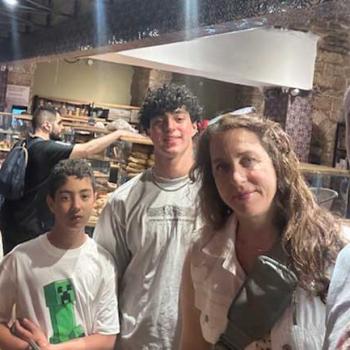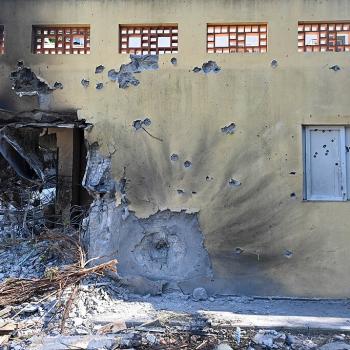
That’s how most people translate it. But maybe they’re missing the mark. In a lecture I attended on this subject, Rabbi Menachem Leibtag pointed out that the Hebrew word “kippurim” (the plural of “kippur)—which is translated here as “atonement”—does not actually refer to atonement for sin when it’s used in the Bible.
The most relevant context where the word “kippurim” appears is in the Book of Exodus, in which the Children of Israel are commanded to observe a seven day dedication ceremony to inaugurate the Tabernacle (the portable Temple used during their desert journey) that had just been built. During that week of dedication, a sin offering was brought:
“Sacrifice a bull each day as a sin offering to make atonement. Purify the altar by making atonement for it, and anoint it to consecrate it.”
(Exodus 29:36)
That word I highlighted—“atonement”—is actually “kippurim” in the original Hebrew. Similarly, the priests who are about to serve in the Tabernacle undergo a ceremony whose purpose is “kaparah,” the same root word as kippurim. Everyone translates that word as atonement as well (see Exodus 29:33).
But does that translation make sense, given the context? Why would the central goal of the seven day dedication of the Tabernacle be “atonement?” There is absolutely no mention of any specific sins being stoned for here!
Instead, Rabbi Leibtag suggested that based on other contexts where this root word of K.P.R. appears, it’s actually best translated as “protection” or “covering,” either in a physical sense (see Genesis 6:14) or a more abstract one (see Exodus 21:30). For example, in that latter case, a monetary fine is described as a “kofer” (same root as kippurim), or in other words, a protection from getting a more severe punishment.
But all that just raises another question: why would the priests and the Tabernacle itself be in need of “protection” as they are being inaugurated for service? Well, God commands the Israelites:
“And they shall make for Me a sanctuary that I may dwell among them.”
(Exodus 25:8)
God’s presence in the Israelite camp is no small thing. His presence and His intimacy cannot be taken for granted and cannot be taken lightly. While one would think that it’d be impossible to just “get used” to having the presence of God be felt in the Tabernacle at all times, apparently that was a serious concern.
When the Tabernacle was constructed, a ritual had to be performed in order to prepare the space for God’a presence to dwell therein. This is our way of dedicating the space to one thing only, and reminding ourselves of the significant place that it will play in our lives.
To be in an intimate relationship with God, we need to always be aware of the specialness of this encounter, and not misuse or abuse the places set aside for worshipping Him. If we truly feel His presence in those places, then we need to treat them with respect and adequately prepare ourselves for that encounter.
In closing, the day of atonement is absolutely about stoning for specific sins. That much is clear from Leviticus 16 and the words of the Prophets that we read on this day, which urge us to repent. But it’s also about protection. Protecting both ourselves and our spaces set aside for worshipping God from the judgment that flows from that encounter. If we haven’t made our temples and our lives into a home that God feels comfortable dwelling in, then He’ll just leave. And that’s the worst punishment. As Isaiah says, “your iniquities have separated you from your God (59:2).”
So maybe atonement doesn’t truly capture what we’re doing on Yom Kippur. I like to think of it as remodeling—both of our selves and of our sacred spaces. Home improvement, if you will.
Comment below and let me know what language you think best captures the spirit of the day.















